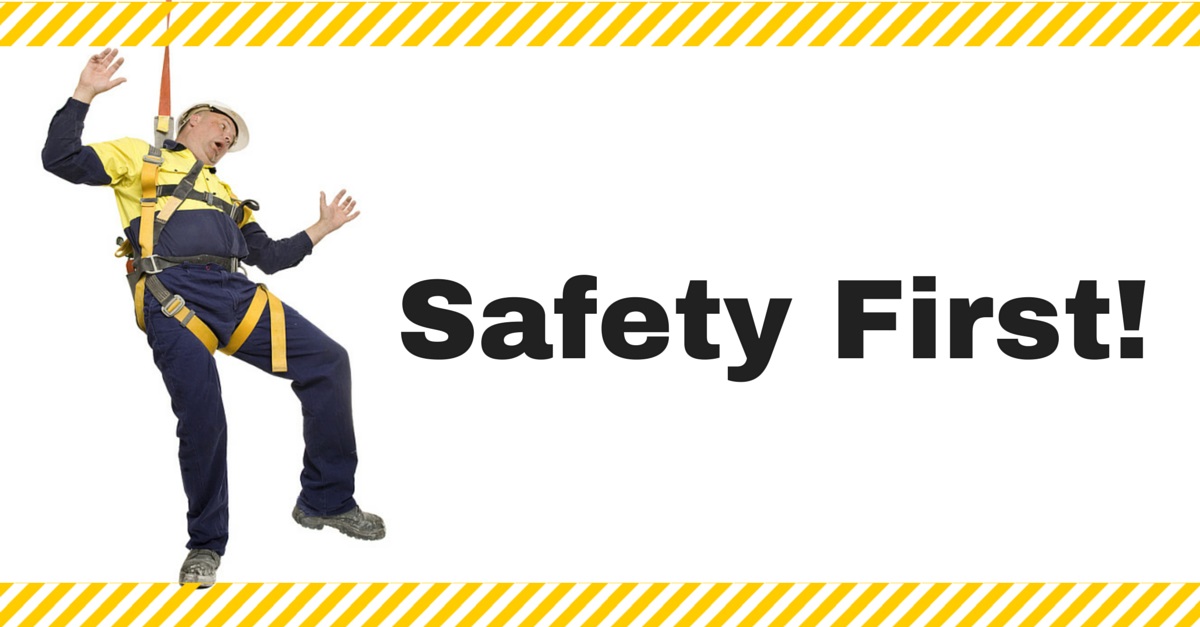
Being on a roof top can give you a bird’s eye view looking out over our beautiful South Carolina landscape, but a roof can be a dangerous place. Not investing the time or equipment needed to implement a few safety steps can end up being costly in the long run.
According to an article published in the Journal of Safety Research, falls from a roof account for one third of fall-related fatalities among construction workers. It is also estimated that over 90,000 people are treated for ladder related injuries every year. What does this mean for a homeowner? Here are some tips to preserve your own safety when you are working at home on your home.
OSHA Safety Standards
The Occupational Safety and Health Administration expects employers and employees to adhere to strict safety regulations. OSHA has rules and regulations that have been enacted for the safety of anyone working higher than 6 feet off the ground. This is because the number one cause of injury or death on a construction site is falling. While you may not consider your home a construction zone, when it is time for work to be done on your roof, it is. These safety measures apply to construction workers– shingle roofers–as well. For instance, did you know that OSHA recommends roofers use safety gear, like permanent anchor points (for safety harnesses) during weatherproofing work?
Roofing Injuries
Roofers have one of the highest injury rates of all occupations. Roofers’ deaths due to falling off the roof they were working on has been on the rise, despite OSHA’s regulations. 2012 saw a 17% rise in roofer death, 70 of the 577 construction fatalities. A quarter of those deaths were from a height of 10 feet or less. This is why it should be non-negotiable that anyone working on your roof should do so with the proper safety measures in place.
Some Basic Thoughts On Safety
Ladders:
Ladders can be hazardous; a simple mistake can end in tragedy. But if you’re going to use one, consider these safety tips. Never use a ladder that needs repair; always use a ladder that is OSHA approved. Make sure your ladder is on a solid, level footing–this helps insure the ladder does not tip sideways. Secure the ladder by tying it off at the top, and always extend it at least 36 inches above a landing or roof for ease of transition. Be mindful of power lines; no sense in electrocuting yourself, as well as falling off the ladder.
Roofs:
There are certain roof pitches roofers refer to as “walkers,” and are considered–among shingle roofers–fairly safe. However, a fall from even one story can cause serious injury and even be fatal. All it takes is making the mistake of stepping on a loose shingle. The higher up a roof is, and the steeper its pitch, the more dangerous it is. Heat exhaustion and vertigo can cause you to lose your balance and fall, as well.
Fall Protection:
Consequently, one of the most important aids to a roofing contractor is fall protection equipment: a harness & tie off. Most homeowners are unfamiliar with this necessary equipment that can prevent many falls and injuries on a sloped roofing system.
Make a Roof Safety Plan
Before roofing starts take a little time to determine what you need to have in place to keep everyone involved in the project safe. On any project where there is an unprotected edge that is more than 6 feet above the next level a personal fall arrest system, guardrail, or safety net system should be in place.
Steps to Being Safe on a Roof:
- Wear shoes with good traction.
- Make sure the ladder is positioned correctly and secured to the roof.
- Go up and down the ladder while facing the ladder.
- Respect the pitch of the roof. The steeper its slope, the harder it is to maintain your footing.
- Keep a low center of gravity as much as possible
- Never work on a wet roof!
- Clear the work area of any unneeded materials and debris.
- Pay attention to anything that could be a tripping hazard ? bundles of shingles, electric cords, tools, etc..
- USE SAFETY EQUIPMENT! This can include PFAs and hard hats.
- If in doubt call a roofing professional
Does Your Contractor Care About Safety?
When hiring a roofing contractor, be sure to ask them about what safety procedures the workmen use when on your roof. If the contractor does not have roofing safety procedures, you would be wise to consider looking for a different contractor. Ask yourself, “If my roofing contractor is not watching out for the safety of his employees, does he care more about money and a profit margin than the quality of work he’s doing?”
At Tri County Roofing and Construction we believe roofing safety is everyone’s concern. Our contractors are trained in safety standards, and are more than happy to help you with your roof repair or replacement needs. Please let us know if you have any questions.
Thanks, and stay safe!
[button link=”www.tricoexteriors.com/contact/” target=”self” color=”#b20000″ text=”light”]Trusted Roofing Services[/button]




